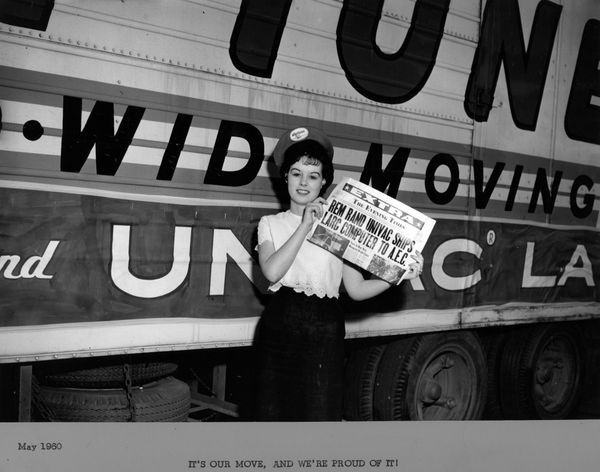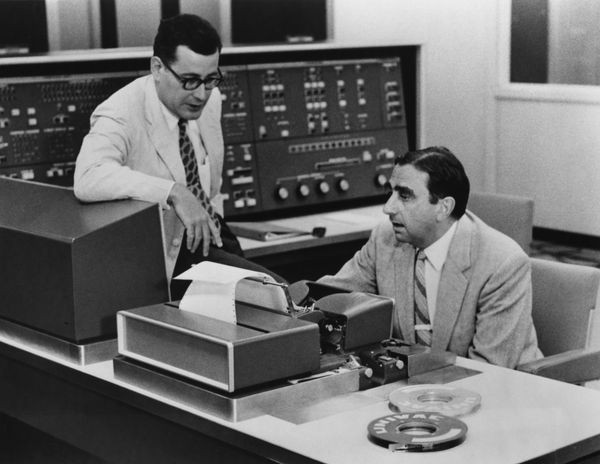Establishing a Pattern: Von Neumann at the IAS
John von Neumann (left) and Institute for Advanced Study (IAS) Director J. Robert Oppenheimer in front of the IAS Computer in Princeton, New Jersey.
Operational in 1952, the IAS machine was the prototype for the first generation of digital computers.
Establishing a Pattern: Von Neumann at the IAS
The earliest advanced computers were one-of-a-kind. The machine developed by mathematician John von Neumann at the Institute for Advanced Study (IAS) was an exception.
Seventeen similar vacuum tube machines were built by governments and scientific institutions around the world, standardizing the approach of storing programs and data in a common memory.
Los Alamos MANIAC computer
The Mathematical Analyzer, Numerical Integrator And Computer did the calculations for ”Project Mike,” which produced the first hydrogen bomb. It was similar to the other IAS-inspired machines, though all were different enough that they could not exchange programs.
View Artifact DetailIn a Class (and Building) By Itself: The UNIVAC LARC
Simulating nuclear weapons is a big task, requiring a big computer. So big that the Lawrence Livermore National Lab had to build a special building for it.
The UNIVAC LARC, Remington Rand’s first supercomputer, arrived at Livermore via five 18-wheel trucks. It was the world’s fastest computer from 1960-1961, despite using already obsolete transistors.
Univac LARC being transported to Lawrence Livermore National Laboratory
Supercomputers are physically large systems, often requiring special transportation and handling. The newspaper headline reads: "REMINGTON RAND UNIVAC SHIPS LARC COMPUTER TO A.E.C." LARC occupied nearly 3,000 square feet of floor space and weighed 115,000 pounds.
View Artifact DetailLab Director Harold Brown (left) and hydrogen bomb developer Edward Teller at the Livermore Advanced Research Computer (LARC)
Lawrence Livermore National Laboratory used LARC, a custom-built supercomputer, to design bombs. Although only two were built, LARC spurred IBM’s "Stretch" project to compete in this new supercomputer class.
View Artifact Detail


